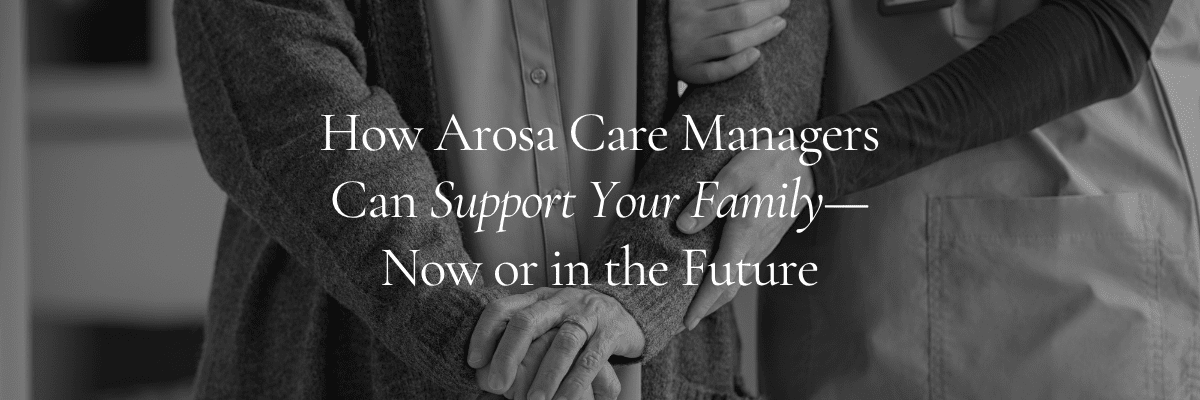Arosa Shares Advice on Caregiver Communications
Whether it be general aging or part of a healing process, good communication with seniors is very important. Studies have shown that good communication is a skill that is teachable, as shown by the fact that medical students often receive communication training during their schooling.
Learning and utilizing effective communication techniques helps caregivers establish stronger relationships with older patients. Stronger relationships with patients can naturally lead to better care as you simply know and understand their needs better. Today Arosa takes a look at some of the top tips for establishing better communication with your elder patients.

1. Only Give Advice if it’s Asked For
Tread lightly when offering advice that is unsolicited. Whether is be a caregiver that is new to the patient or a child that has always been the one seeking the advice from a parent, this transition can be difficult for seniors.
2. Speak Clearly
Many seniors don’t like to admit that they’re losing their hearing. Avoid putting them in that position by speaking loudly and clearly and keep it consistent. Stay focused on one idea at a time and keep sentences short and sweet.
3. Choose Battles
You’ll notice the problems continue to mount the older parents or clients get. Whether it is a loss of mobility, losing stamina, or being lonely, don’t try to tackle all of their problems at once. Listen and prioritize their care to keep from overwhelming them or you.
4. Laugh as Much as Possible
We’ve all heard it, “laughter is the best medicine” and it is so true. Use laughter to lighten the mood, break tension, or change a subject. Just always keep in mind that you want to laugh with them, not at them.
5. Maintain Eye Contact
While non-verbal, eye contact is the most powerful way to communicate with someone. If you’re eye to eye they know you’re listening, you’re engaged, and you care about what it is they have to say. Patients are more likely to open up when they feel that connection brought about by eye contact.
6. Utilize Images and Charts
Many people consider themselves visual learners. As your mind begins to decline a bit, your hearing fades, and you have trouble learning new topics, visualization helps. This is particularly true with our seniors. Put things in terms they can understand, and show them charts, images, and other visuals that might help explain.
7. Summarize Early and Often
You’ll inevitably cover tons of topics day to day with patients. If something is particularly important, it is critical to go back and review that. It also helps to summarize as you go. Be certain your senior understands the topic or subject you’re on before you move on to the next one.
8. Leave Communication Open
Give your patients the ability to ask questions and express how they feel. This open dialog helps them feel as though they’re a part of the process as opposed to the problem. Allowing them to ask questions and feel more educated also helps relieve their anxiety and tension and may help with their overall care.
9. Do Not Rush
Rapid fire questions, stats, or the like is a terrible idea when it comes to communicating with seniors. They need that extra time to absorb, process, and digest what you’re saying. Feeling rushed also leads to them being more apprehensive about the topic and may actually take away their opportunity or desire to ask crucial questions.
10. Watch Your Language
This isn’t about swearing or using curse words. This is about watching trigger words like cancer, dementia, or other conditions they may have or may have a fear of developing. Along with this, always avoid medical jargon. Always assume patients don’t know much about their disease or illness and speak to them as though it is their first time learning of it. Using abbreviations like CT scan, MRI, and the like can also be confusing so lay it out in terms that they will understand.



